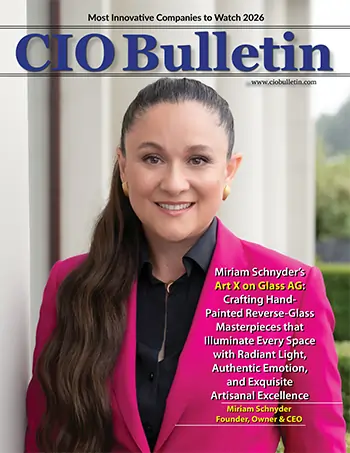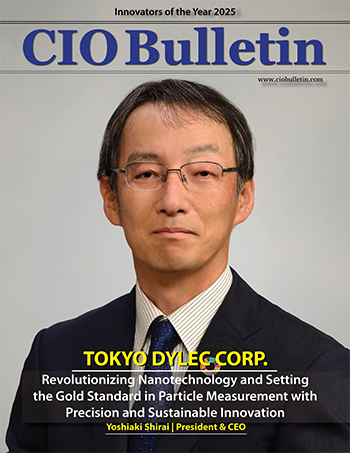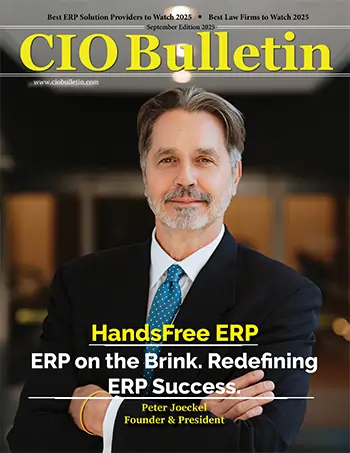Home Business Opinion In What Way Must a Good Leader...
Opinion

CIO Bulletin
08 October, 2024
Leadership is more important in the current world that is characterized by rapid growth and change of events in business world. Many believe that leadership is a single style that fits in every organization while on the contrary, the best leaders understand that leadership calls for flexibility according to the organization and the associates. Knowledge of autocratic, democratic, transformational, and laissez-faire leadership approach is central to realizing success. But how does a good leader know that a particular variant should be applied in a given situation? These are the two major leadership styles to which this article seeks to give a breakdown on when a great leader should use the two as well as how.
If there is one thing that has been well established in leadership literature, it is that leadership adaptability is key. Managers have to work through different issues such as the dynamics of the group, the objectives of the organization, and other issues affecting it, and such things make a leader to be adaptable. To be an effective manager, a great leader must be aware that they require other forms of leadership approaches than the ones they prefer. They have to identify context, recognize the needs, and select the leadership style, which will result in the greatest benefits. But how does each leadership style contribute to this flexibility to occur?
Let’s take a closer look at the four different leadership styles—autocratic, democratic, transformational, and laissez-faire—and how a good leader can approach each.
Directive also known as autocratic leadership, it involves a leader making decisions for the organization without consultation from the others. This may appear very rigid sometimes, but when applied in certain circumstances, this approach is quite efficient.
An autocratic leader works best in organizations where there is need to make decisions swiftly or where the leader has all the knowledge of the issue being discussed. During emergencies, when disagreements cannot be entertained, the autocratic style means the organization can act fast. For instance, in conditions where speed is critical, for example, in the health facility, or in military facilities, the autocratic style of management is appropriate since it provides decisions and does not involve the employees.
They also will come in handy when working with a team of inexperienced employees where the leader has to instruct a lot. The following benefits come with taking control; The leader is in a better and central position to set expectations, outline procedures and make sure that all the tasks are properly done.
Suppose in a rapidly evolving start-up environment, the team receives a lot of pressure to complete a project in a short time. Alas, there is never enough time to talk, and the leader is the most experienced person in the company. Here, the leader employs autocratic approach to whereby provides assignments, set priorities and make quick decisions. In this case, what leadership adaptability involves understanding when it is right to be rigid and when it is right to open the floor for employees once the dust has settled.
In contrast to the autocratic style, democratic leadership—also known as participative leadership—focuses on collaboration. These types of leaders allow their subordinates to contribute towards decision making processes whereby they will make their recommendations. This approach can invite new ideas and solutions and even increase the level of employee’s satisfaction because people noticed and appreciating their opinions.
Democratic leadership style is suitable where the staffs have to design new products, come up with new work strategies, or solve different problems by using their wisdom. When a number of members in a team understands the job and its important details, the leader with the democratic style can use this knowledge in coming up with sensible decisions to use in a particular environment. This style is most suitable for organizations that require employees to work in a team, as is the case with advertising firms, software developing companies or design houses.
For instance, take a case of a Technology firm that specializes in creating an app. The leader understands that as professionals who were sourced from different companies, members of his/her team are adept in various fields – some may be masters in UX design, while others in coding. In this approach, the leader collects the team and explains the project, looks for the team’s opinion and jointly search for the most effective solutions for design. When adopting the democratic leadership style, the leader makes sure that people’s suggestions are considered, which improves the innovation of the product.
Leadership adaptability means that a good leader understands when to listen to the employees and when it is time to make a decision.
Transformational leadership is not about day to day management. This style is used by managers who want to move their workers, to make them do things beyond their capacity. It is more about coming up with a vision and having people buy into the change.
Transformational leadership is best suited in organizations that experience a new growth, innovation, or change. It could be a company that is going through an organizational transformation, an organization that wants to start a new venture, or a team that wants to solve a big problem: transformational leaders are those who assist their team go through the change management process.
The preferred style for this purpose is especially helpful if the leaders require people to step out of the existing paradigms and think in a different manner. Transformational leadership brings positive changes in the environment, the encouragement of individuals to learn, assume new roles and increase personal commitment to do something.
For instance, when a traditional store-based retail firm intends to become an e-tailor. This is a major transition for the business and the leader must shepherd their team through this process. The leader as a transformational leader works towards developing change vision, ensuring that everyone understand why the change is needed and gains their support for embracing new technology and strategies. In this manner, a leadership approach is created in which the team gets energised, motivated and prepared to face the upcoming hurdles.
This is where leadership flexibility comes into play, as the leader may be using both transformational and democratic leadership styles, switching from the former if the team loses focus or becomes less involved in decision making.
There is a general approach of leaving the workers to their own devices, also called delegate leadership or autonomy. The benefit of this approach is most appropriate in organizations that are made up of highly skilled and self-motivated people who do not need close supervision.
One should use laissez-faire leadership when team members are qualified professionals who hardly require frequent supervision. As for employees in business-to-business companies like research and development, academia or design and art students and artists it is highly preferable when they feel that they are not tightly monitored doing something that they like.
Think of an R & D centre of a pharma firm trying to come up with aromatized compounds. The leader decides what would be best for them and their organization and step back completely, giving scientists and researchers free reign to search for new ideas and methods. The leader will monitor and visit frequently to assist or provide resources but essentially leaves the direction up to the implementation team.
In this case, leadership flexibility refers to the ability to know when the team is ready for self-direction and when it needs direct directions from the company.
A good leader understands that it is possible to be effective only if he or she learns to be flexible in their behaviors and follow different leadership styles. Controllability skill is an important character of leaders in the current world, where no two problems are similar.
To be a successful leader, it’s essential to:
1. Understand each leadership style: Appreciate the importance of the autocratic, democratic, transformational and the laissez-faire leadership style.
2. Assess the situation: Evaluate the current environment, the team’s capabilities, and the urgency of decisions before choosing a leadership style.
3. Embrace flexibility: A good leader is very flexible and capable of bringing into practice the different leadership styles depending on the circumstances.
4. Empower the team: Promote the growth of people, engagement for collaboration and choose to probe when guidance is needed.
FAQs
1. How does a leader adapt to different leadership styles?
A leader adapts by assessing the situation, team dynamics, and goals, then flexibly choosing the most effective leadership style to achieve success while maintaining team engagement and productivity.
2. When is autocratic leadership most effective?
Autocratic leadership works best during crises, time-sensitive situations, or when the leader possesses the most expertise. It allows quick, decisive actions but must be balanced to avoid stifling creativity.
3. What are the advantages of democratic leadership?
Democratic leadership fosters collaboration, innovation, and employee satisfaction by encouraging team input. It empowers employees, promotes creative problem-solving, and strengthens team trust and commitment to shared goals.
4. How can transformational leadership inspire teams?
Transformational leadership inspires teams by creating a compelling vision, encouraging innovation, and driving change. It empowers individuals to exceed expectations, fostering growth and adaptability during times of transformation.
5. When should a leader use laissez-faire leadership?
Laissez-faire leadership is most effective when leading highly skilled, self-motivated individuals. It allows autonomy and innovation but requires careful monitoring to ensure alignment with organizational goals.







